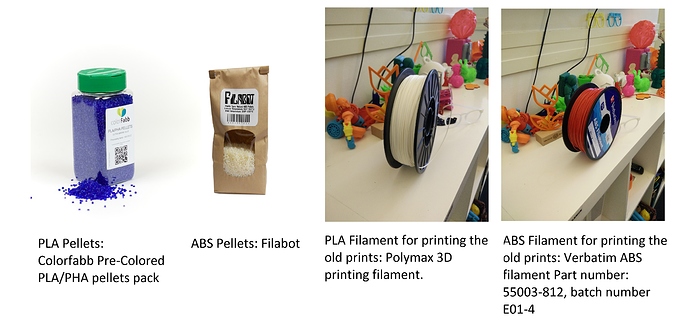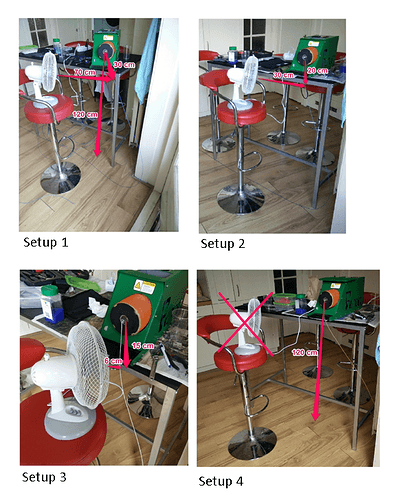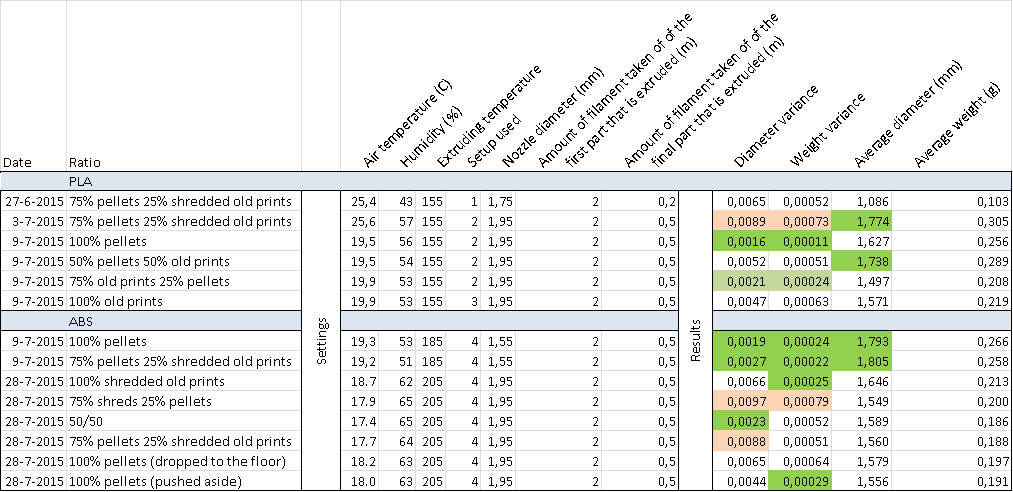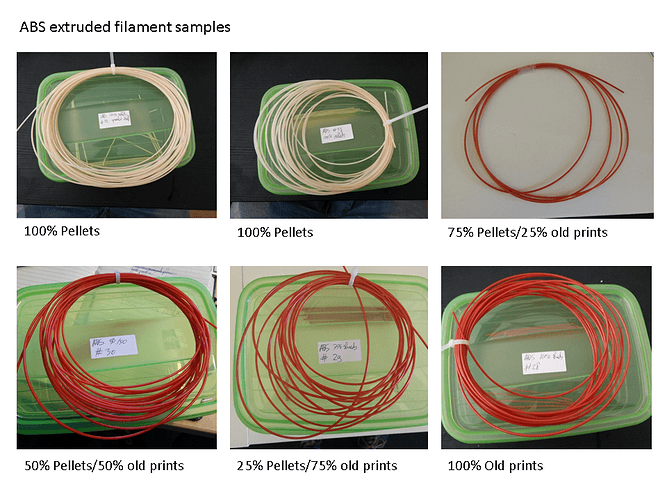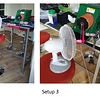Welcome back to this quick start guide to filament extruding!
My first talk post 57 of this series was all about the perfect setup for extruding. This second post will be all about the results that I was able to get and what they tell us.
Post 1: How to get the best recycled filament from your old 3D prints? 57
Post 2: Recycling ABS and PLA data overview
Post 2: Recycling ABS and PLA data overview
In order to start extruding you either need new pellets, shredded old prints or of course a combination of both. These are the materials that I used:
In order to quickly make a lot of ‘waste material’ I printed simple blocks with 50% infill:
The green block is printed as a test, the white blocks are the PLA prints and the red blocks are the ABS prints. After four rounds of shredding the PLA prints the diameter of the largest chuncks in the mix was about 1,0cm.
After two rounds of shredding the ABS blocks the largest pieces also had an average diameter of about 1,0cm. This difference is probably due to the fact that the ABS prints often failed halfway through the print causing the initial pieces that were fed into the shredder to be smaller.
In total I used four different experimental setups that you can see in the image below. The only thing that varies is the position of the fan. For setup 1, 2 and 3 the 30W fan is used at half power. In setup 4 the fan is not used. In all setups the nozzle of the Filabot is placed 120cm above the ground.
Results Data Overview
Explanation
- Outside air temperature and humidity are not expected to have a large influence on the end result but are given just to give a complete overview.
- Extruding temperature is one of the main fine-tuning parameters.
- The setup that was used refers to the research setups mentioned earlier.
- The first part and the last part of the filament extruded for each sample are discarded. The first part might contain a different material mix due to the transition and it might have been pulled down differently since there is no filament ‘beneath’ it. The last part might also have been pulled differently since it hasn’t been fully cooled when the process is stopped.
- Variance is the average of the squared differences from the mean. This is a measure for the difference in results for a certain parameter. This is very important since the less variance there is in the filament the better it is expected to print.
Interpretation
The best results are marked in green (very good) and lighter green (good) and the worst results are marked in red.
- For both ABS and PLA the filament produced has average diameters pretty close to 1.75mm so I expect that both will produce acceptable printing results.
- There seems to be a correlation between the weight variance and the diameter variance. This makes sense since weight and diameter are also correlated since a larger diameter will most probably also increase the weight.
The fact that the results are very mixed and that in general the range in the variance is rather small leads me to conclude that:
- Mixing shredded old prints with new pellets to produce new filament can give very good results.
- Recycling old prints exclusively into new filament is feasible.
When looking at the results it is clear that using new pellets exclusively gives the best results so if you care about making your own filament but don’t want to bother recycling your old prints then this is definitely the way to go!
This post is part of the second series of 5 on recycling for 3D printing. In the next series I will show the printing results that I was able to achieve with my selfmade filament.
Series 1 (1 6, 2 2, 3 1) Introduction to 3d printing recycling
Series 2 (1 57) How to make your own filament by recycling old 3D prints
Series 3 3D Printing with recycled filament
Series 4 The promise of 3D printing with recycled household waste
Series 5 Can Polypropylene (PP) plastic be the next big thing in 3D Printing
created
Jul '15last reply
Aug '15- 6
replies
- 4.3k
views
- 5
users
- 10
likes
- 4
links
